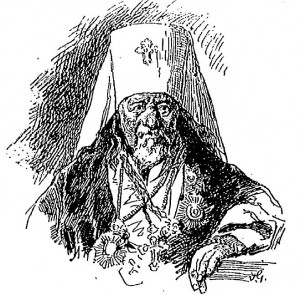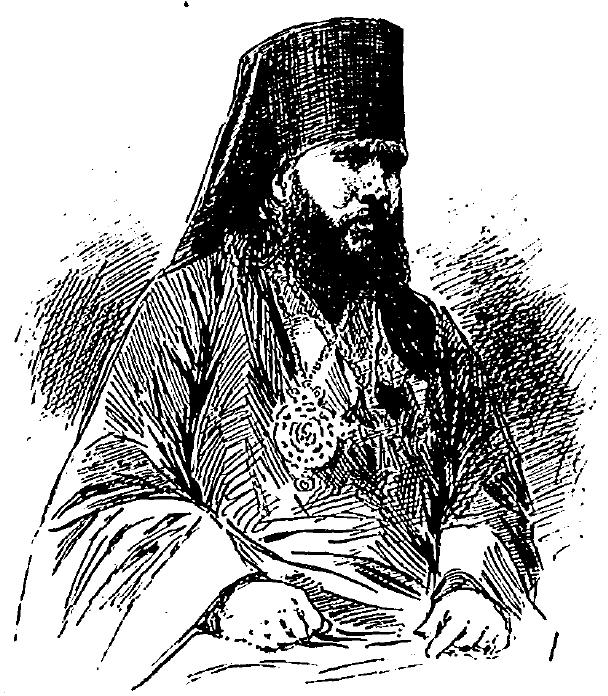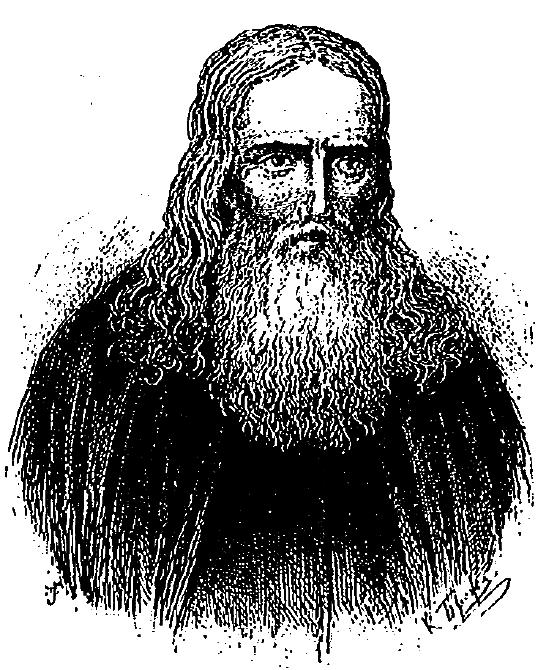 As his name suggests, Valerian Gribayedoff was from Russia. He was born in Kronstadt in 1858, the son of a colonel in the Tsarist army. He studied in St. Petersburg and then went to England, where he appears to have been acquainted with the exiled French Emperor Napoleon III (aka Louis Napoleon). I’ll let the Wisconsin State Journal (8/21/1885) pick up his story:
As his name suggests, Valerian Gribayedoff was from Russia. He was born in Kronstadt in 1858, the son of a colonel in the Tsarist army. He studied in St. Petersburg and then went to England, where he appears to have been acquainted with the exiled French Emperor Napoleon III (aka Louis Napoleon). I’ll let the Wisconsin State Journal (8/21/1885) pick up his story:
Valerian wearied of home life and ran away to South America, where he entered the Chilian [sic] army as a drummer boy. At the close of the war with Peru he went to Russia and soon identified himself with certain political societies, which brought him under the notice of the government and compelled him to seek other climes. After a prolonged residence in Paris, Berlin and other European cities, he came to this country and engaged in journalism, which profession he followed until the craze for pictorial papers induced him to turn his artistic talents to account.
Gribayedoff did all this by the age of 25. He quickly became famous as an illustrator, renowned for his “keen insight into character” (New York Times, 2/17/1908) and his ability to convey that insight in black and white. When photography became more common, Gribayedoff learned how to use a camera, took photos, and then copied them as sketches. His works led directly to the rise of Sunday newspaper supplements, full of photos and illustrations.
He wasn’t just an illustrator, though. Gribayedoff continued his journalistic writing, tackling all manner of subjects. In 1895, he published his first and only full-length book, The French Invasion of Ireland. By this time, he was well-established as the leader of a growing group of New York-based illustrators.
Gribayedoff was tall, handsome, and charming. He made friends easily, and was a popular raconteur in late 19th century New York. He spoke many languages, and, having traveled throughout the world, he was as cultured as they come. His subjects didn’t even mind his camera; according to the Times, “his natural tact enabled him to take his pictures without the audacity of those who have taken his place.”

Sketch of Metropolitan Isidore of St. Petersburg, by Valerian Gribayedoff (Christian Union, 12/10/1892)
Coming from the Russian nobility, it is likely that Gribayedoff was baptized in the Orthodox Church, but it’s not clear whether he maintained his Orthodox faith into adulthood. Certainly, his period of youthful rebellion suggests that he probably abandoned Orthodoxy at some point; whether he rejoined the Church remains an open question.
That said, he made his own contribution to American Orthodox history, authoring (and illustrating) numerous articles on Orthodoxy for different US publications. In an 1892 article on the Russian Orthodox Church, Gribayedoff called it “that wonderful branch of organized Christianity.” After briefly recounting the history of Orthodoxy, he concluded, “It has a great mission to perform, and, on the whole, it is doing its work nobly.” (Christian Union, 12/10/1892)
Elsewhere, writing about Orthodox services aboard a Russian naval vessel, Gribayedoff said, “I cannot imagine a more grateful subject for the artist’s brush than these morning and evening devotions on board a Russian war-vessel, the rugged outlines of the worshipers softened by the dim half-light of early dawn or the twilight of evening; the plash of a distant oar, the cadence of flowing waters beyond the taffrail, lend an added charm to the scene, the poetry of which can be fully realized only by those who have witnessed it.” He went on: “A glance around at the earnest throngs will convince the most skeptical that he is indeed in a house of prayer!” (Christian Union, 6/10/1893)

Sketch of Bishop Nicholas Ziorov, by Valerian Gribayedoff (Frank Leslie's Popular Monthly, July 1895)
Gribayedoff wrote several articles on Orthodoxy in the United States, which, of course, was a rather new thing in those days. He told his readers of the 1894 centennial of Orthodoxy in Alaska, and reported on the early conversions of Uniates to the Russian Church. In 1895, he reported on the creation of a Russian parish in New York; indeed, Gribayedoff’s account is one of our main sources for this landmark event. He must have known Barbara MacGahan, the Russian-born war correspondent who was largely responsible for founding the New York church. Of MacGahan, Gribayedoff wrote, “Without her efforts but little would have been attained.”
In 1897, Gribayedoff began to feel that America was becoming “too hurried and crowded.” He moved to Paris on very short notice, and he quickly gained renown there for his photos of the Dreyfus trial. During the Russo-Japanese War, Gribayedoff worked in Siberia as a correspondent for an American newspaper.
Valerian Gribayedoff died in Paris in 1908. He was just 50, but had lived a life fuller than most men twice his age. He left a wife and a 25-year-old son; the son, apparently as much a traveler as his father, was working as a surgeon in the Philippines.
From his writings, it’s clear that Gribayedoff knew a great deal about Orthodoxy. He had a good grasp of Orthodox history and theology, and he was well acquainted with many of the leading Orthodox figures of his own day. In many places, he spoke very highly of the Church, and while I have no evidence that he was a member, it would certainly not surprise me. Even if he was not Orthodox himself, his writings on Orthodoxy are valuable sources.
[This article was written by Matthew Namee.]

Nice synthesis of VG’s life. The focus on his contribution to Russian Orthodoxy interesting. Not sure how “orthodox” he was since he seemed to hold varying viewpoints on social issues that would not put him firmly in one camp. He has been characterized as a nihilist which might make one question his adherence to any structured religion. Of course, I am only theorizing based on my extensive research of him. Because of contradictory information about him from differing sources, it is understandable that bits of biogragphy are erroneous. In fact, he died in Lausanne, Switzerland and is buried there, He had at least four other sons besides the one mentioned. And that son was a merchant in the Phillippines whose one direct descendant is clear that her grandfather was never a surgeon. But these bits do not change the overall substance of the article and I commend the author for putting this piece together. Christine Gribayedoff Rios
Christine, I take it that you are descended from Valerian Gribayedoff through his son who was in the Phillippines — correct? I’d love to hear more about your ancestor. Please send me an email at mfnamee [at] gmail [dot] com. I’d be happy to share my own sources with you, as well.
Hey, I am researching Valerian’s ancestry. I am his great-great grandson through his son Reginald, who is not listed here. The article mentions that he is the son of a Tsarist colonel. Any further information than that? Also, I would like to establish a connection between Valerian and Alexander Griboyedov. Thanks for any help.
Mr. Miller,
I’m afraid I don’t know any more than what I wrote in the article. However, Ms. Rios, who commented above, is also a descendant to Valerian Gribayedoff, and she may know more. I’m not sure if she’s receiving these comments, but I’ll try to email her and see if I can connect the two of you.